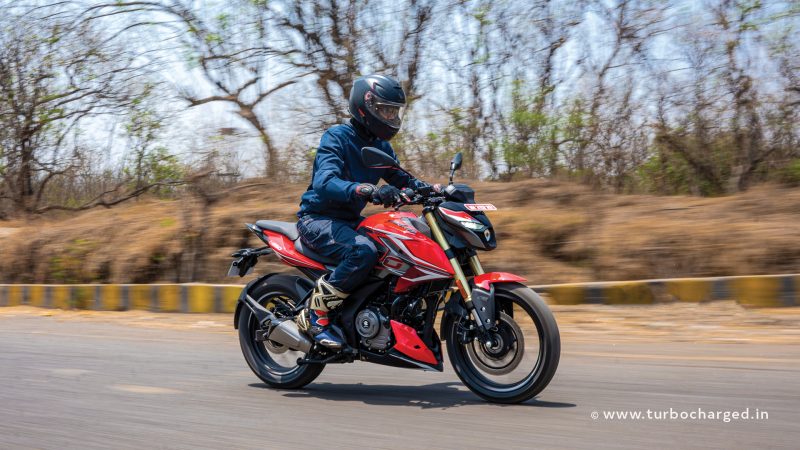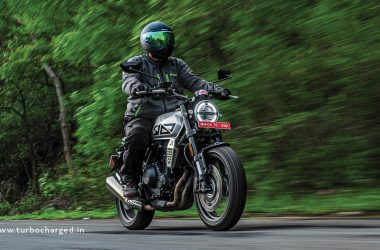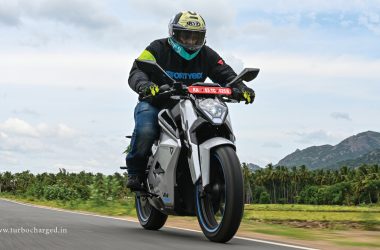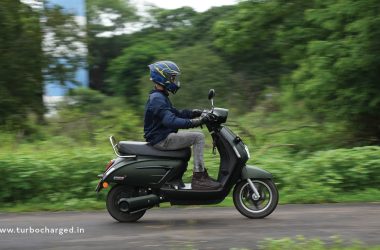The Pulsar nameplate is no less than an icon in the Indian automotive culture. And the fact that Bajaj is currently selling three generations of the Pulsar simultaneously is testament of the same. In fact such was the demand for the Pulsar 220F that Bajaj had to bring it back despite having the newer F250 on sale. In the past, the Pulsars were known to be trendsetters, for eg: the Pulsar 220 DTS-Fi with it fuel-injection tech or the NS200 with its liquid-cooled engine, but that wasn’t quite the case with newer Pulsars – the N250 and F250, when they were first launched in 2021, were a launch too late. Three years later, Bajaj is looking to fix that with the updated N250 and offering what the market currently wants. How well does the updated Pulsar N250 manage to do that? Let’s find out.
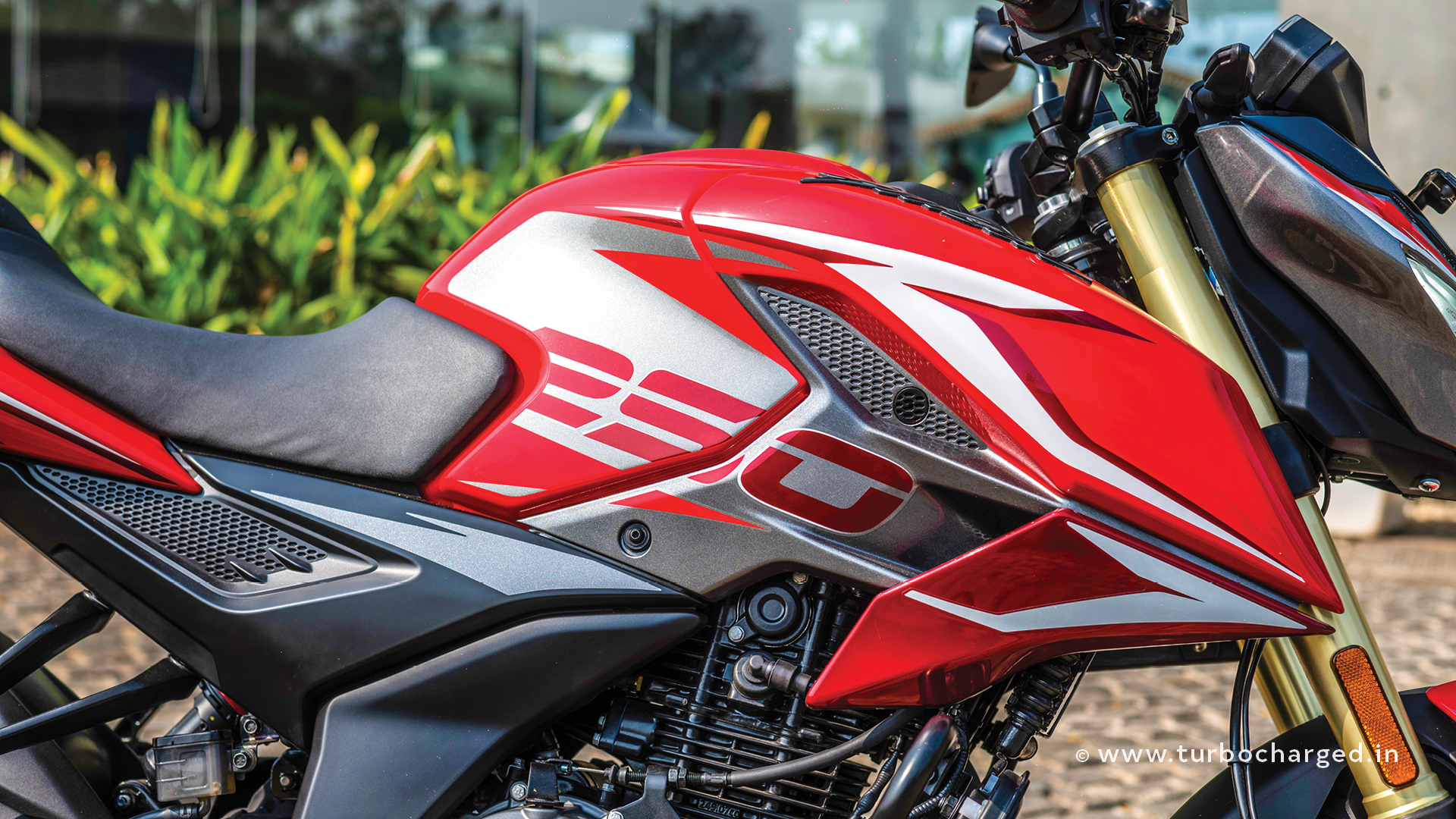
The design of the N250, to begin with, wasn’t radically different compared to the older Pulsars, especially the NS series. That continues with the 2024 model but it now has better road presence, most of which is due to the addition of chunky upside-down forks and a wider 140-section rear tyre (up from 130-section). The naked streetfighter comes with three colour options – White, Red (both get golden USD forks) and Black which comes with USD forks finished in the same shade. Apart from this, the N250 also gets new graphics. The rest of the design remains the same with an aggressive headlamp design, a muscular fuel tank, a split-seat design and an x-shaped tail lamp.
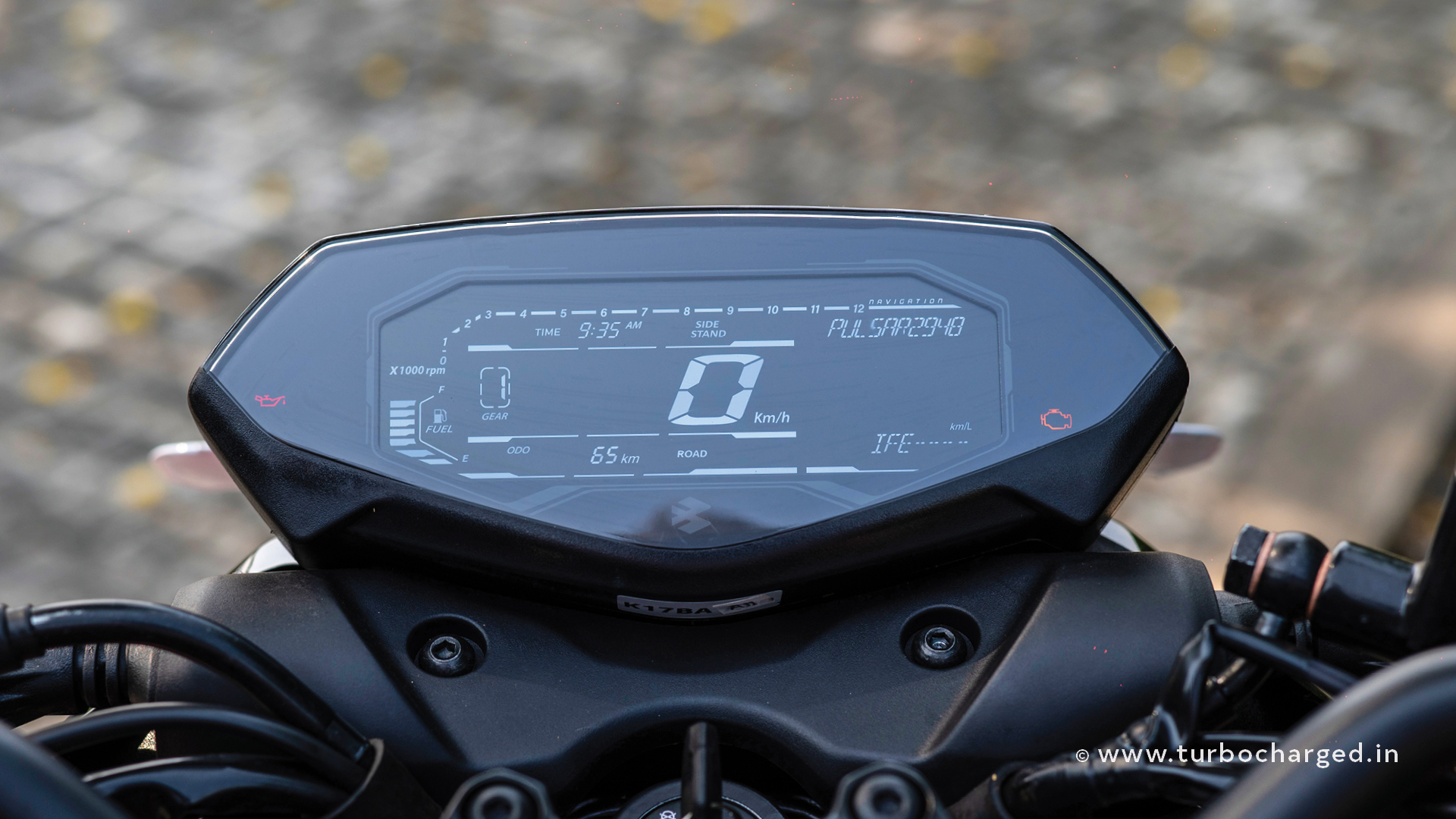
Bajaj has put forth a strong foot forward in the features department this time around. It starts with a fully-digital instrument console that gets Bluetooth connectivity and turn-by-turn navigation. There is a lot of information displayed on the LCD unit and it does feel cluttered at times. Additionally, there’s no proper marking for the redline. That being said, we didn’t face any visibility issues even under direct sunlight. Moving on, you now get three modes for the ABS – Road, Rain and Off-road and it is also gets traction control (more on this later). You can switch between these modes via a single Mode switch placed on the left switchgear. Double tapping the switch changes the ABS mode and you can switch the traction control off (only possible in the off road mode) by long pressing the same switch. I feel another switch to go back and forth between settings would have added to the convenience. Moving on, the N250 continues to be offered with all-LED lighting, dual-channel ABS, a slip-and-assist clutch and a USB-A charging port. The overall quality levels are decent for the price and the fit and finish too feels good in most places except for a few minor exceptions.
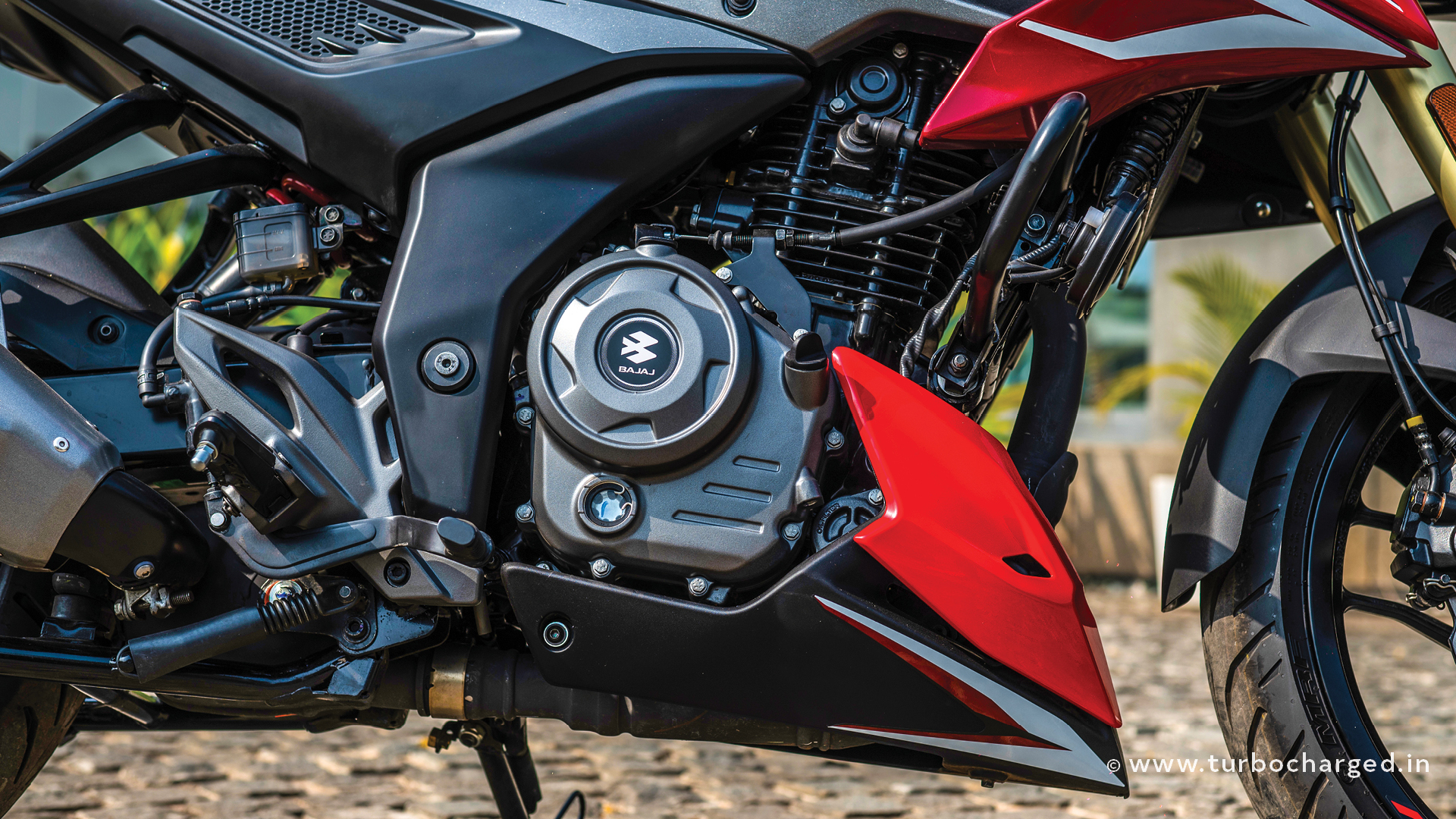
Coming to the powertrain department, the updated Pulsar N250 carries forward the same 249cc air/oil-cooled engine that puts out 24.5PS and 21.5Nm. Contrary to what its go-fast looks might suggest, the engine of the N250 has a laid-back character with most of the grunt present in the low and mid-range (it can even pull power wheelies – Ed). This helps in the city as you are not required to make too many gear shifts. Not that shifting a gear is tedious thanks to the slick 5-speed unit and a light slipper clutch.
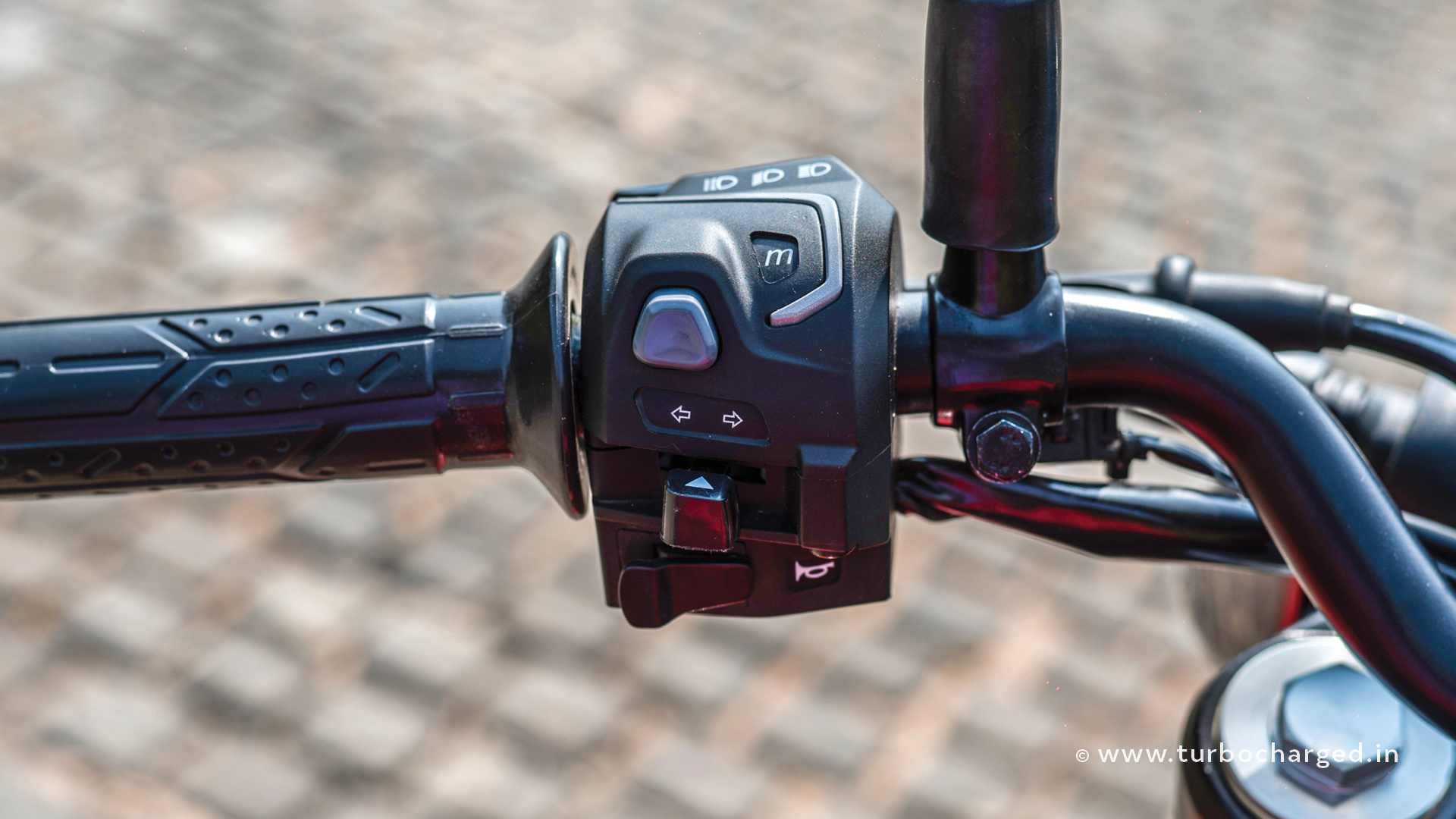
Out on the highway, we didn’t really miss 6th gear as the N250’s engine felt stress-free at highway speeds. For reference, the revs sit around 5,500rpm to 6,000rpm between speeds of 90-100kmph with enough grunt to make quick overtakes. The overall powertrain feels refined except minor buzz in the top end of the rev range. A special mention to the exhaust which has a nice throaty note that sounds pleasing to the ears.
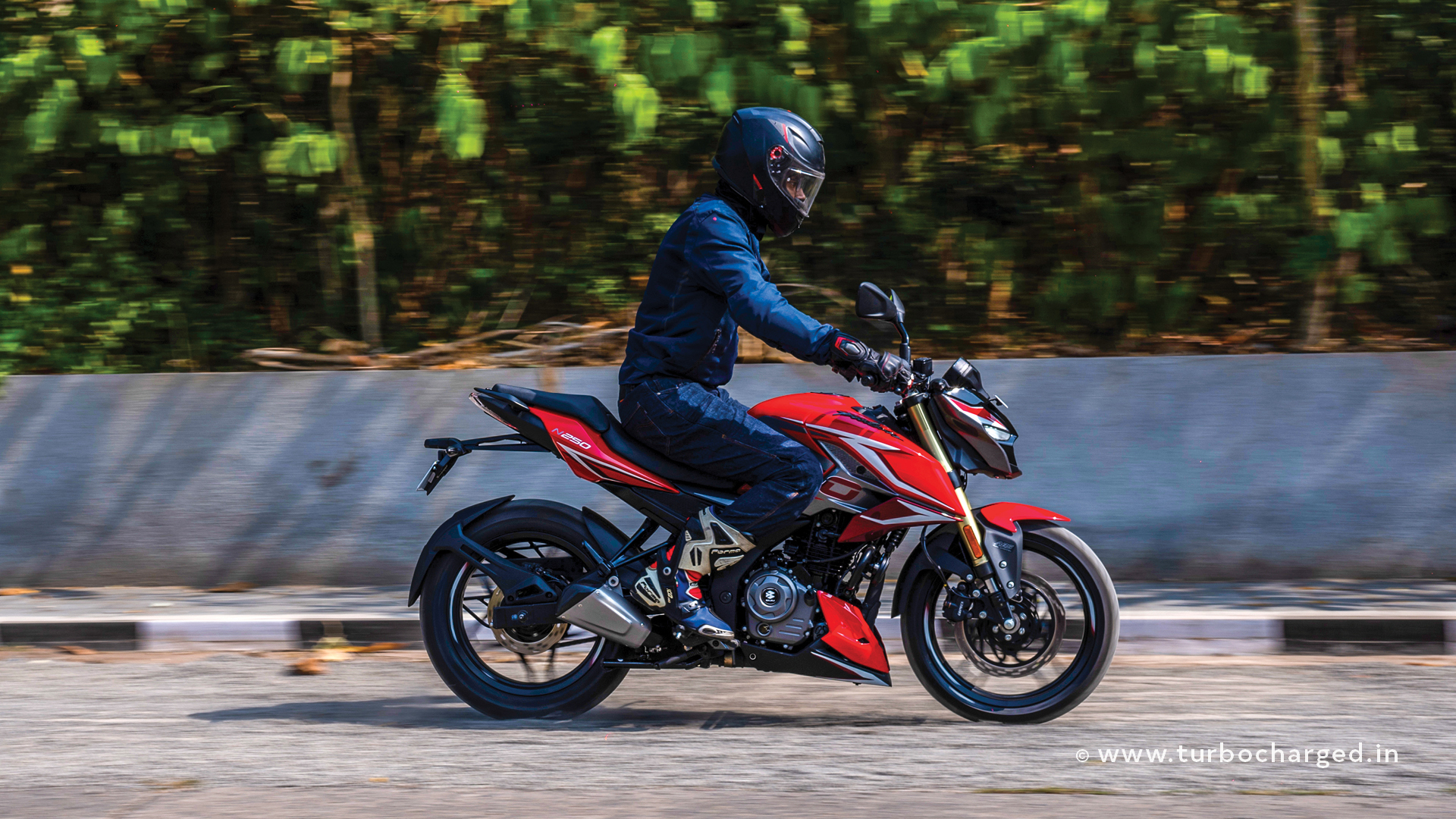
We also tested the traction control on a gravel patch Bajaj had prepared to test the ABS modes and it works quite well but given that the N250 now gets a wider rear tyre, there is anyway ample grip on offer so you’d seldom feel the traction control kicking in normal use cases.
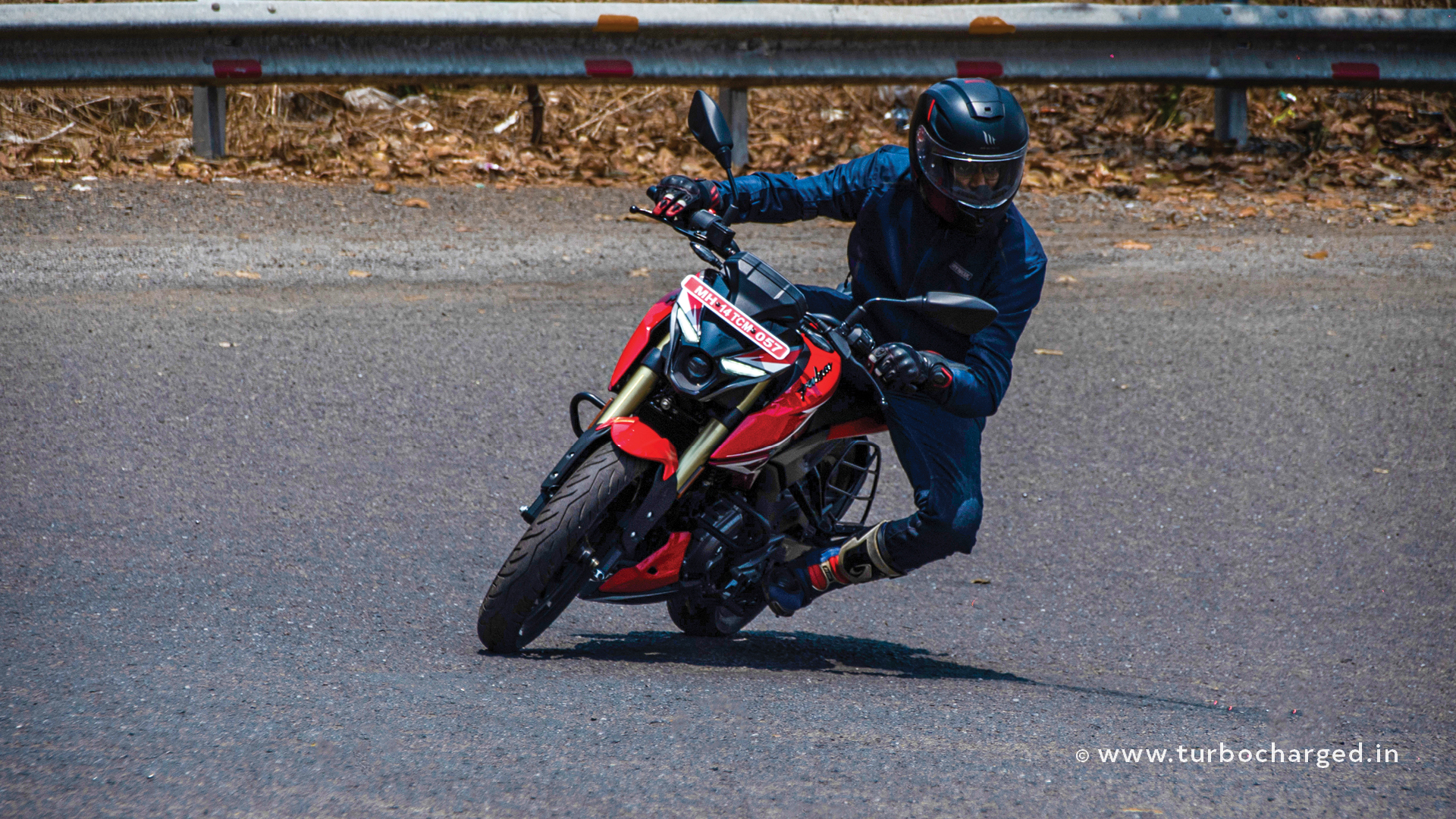
The biggest update on the chassis front comes in the form of the addition of upside-down forks and a 9mm shorter wheelbase. Unlike what I expected, the front end feels heavy and not as flickable as I would have liked. It offers good confidence when entering a corner but isn’t as quick to respond to steering inputs, especially through chicanes. That being said, it is decent enough to tackle the city traffic without any issues. The straight line stability too is impressive and the Pulsar N250 feels confident at highway speeds. The ride quality is on the firmer side but never feels uncomfortable.
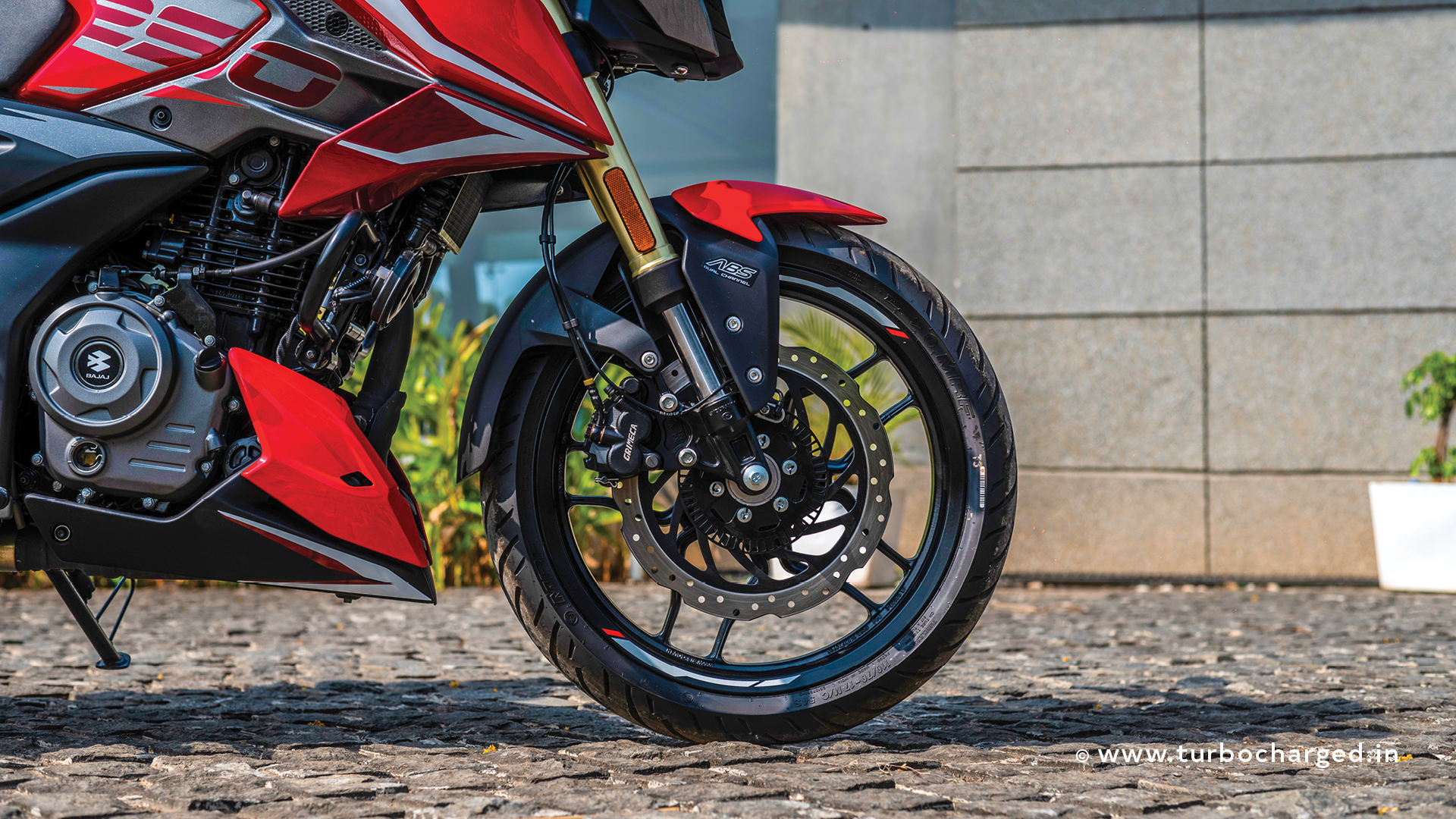
Coming to the braking setup, the duties are handled by 300mm and 230mm discs at the front and rear, respectively. The front lacks initial bite and feels a bit spongy. The stopping power is decent, though. The ABS is in its most intrusive setting in the Rain mode while it gives you a bit of liberty to slide in the offroad mode before kicking in. There is a noticeable difference in how the brakes are engaged and disengaged (becomes more gradual as you move from Rain to Offroad mode) and in the lever feel in each ABS mode. That being said, this will be hard to notice on the road. The good part is that you can switch between the Road and Rain ABS modes on the go by simply closing the throttle, while you need to be under 20kmph to engage the Offroad mode.
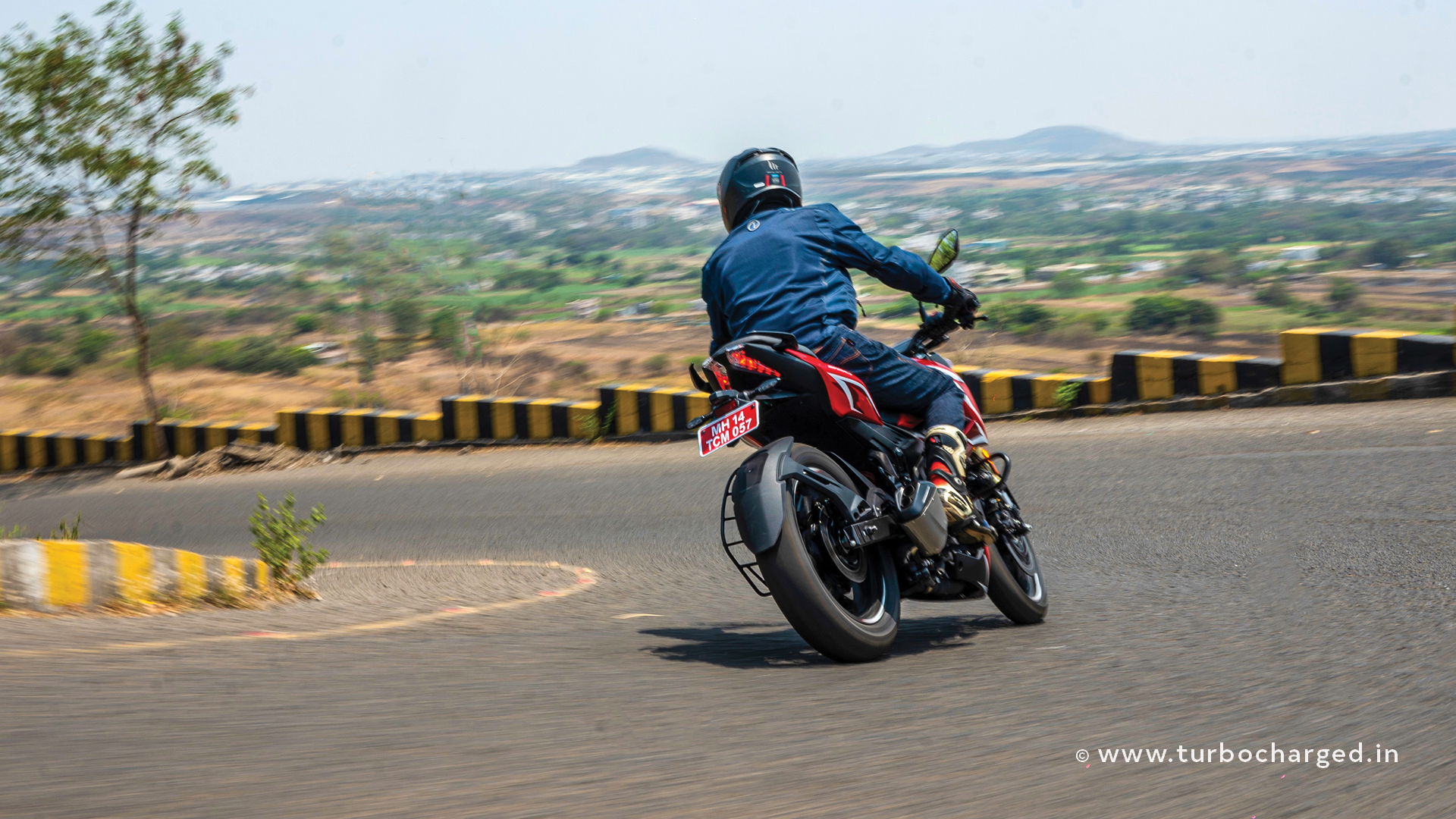
Coming to the most interesting part – the price. At Rs 1.51 lakh, the 2024 Pulsar N250 with all the updates we spoke about earlier is just around Rs 800 more expensive than the outgoing model! Suddenly the N250 with its quarter-litre engine capacity now feels like the most value for money motorcycle in its price bracket. It is quite an all-rounder – it has good road presence, the engine is capable of handling both city commutes and highway touring, the feature list is long and it is dynamically sorted too. Yes, it is not outright sporty and a few of the features like the digital console could have been better executed but it is good to see the Pulsar moving back to its roots of being a trendsetter without breaking your wallet. And if that is also the case with the upcoming Pulsar NS400 – the biggest and most powerful Pulsar yet, it’s going to be the one to watch out for!





